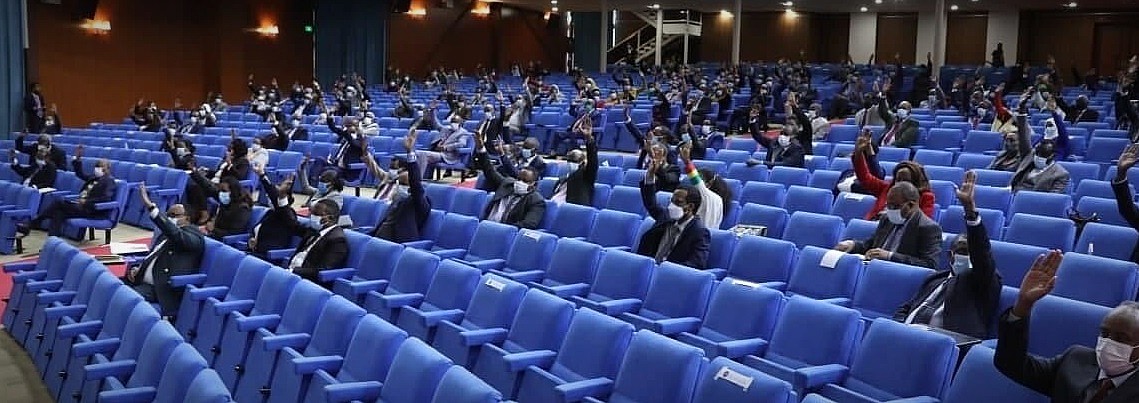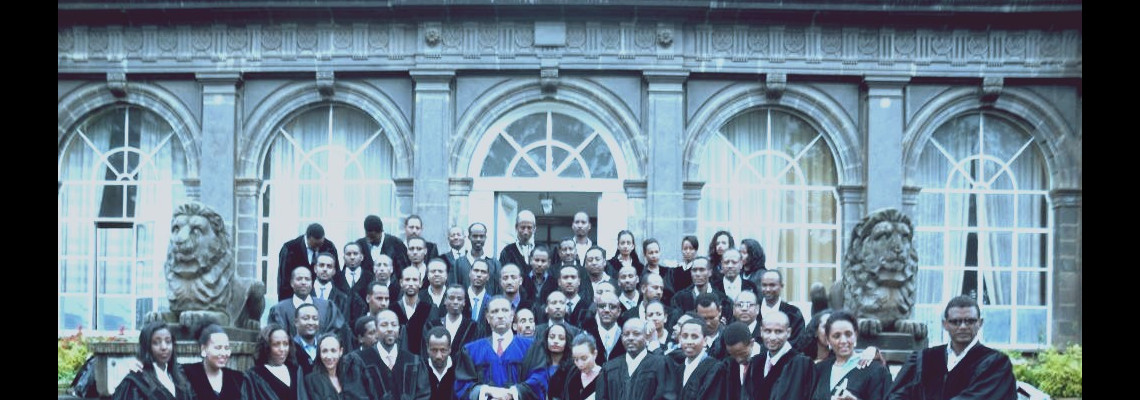
(March 20, 2015) The Lideta Federal High Court solaced the Ethiopia Shipping and Logistics Service Enterprise (ESLSE) with a ruling in its disfavour for a payment of 15.3 million Br with nine percent interest, rejecting its claim of 245 million Br from D.M.C Construction Plc.
The lawsuit by the state’s shipping and logistics company also entangled NIB Insurance Plc, which had given a performance guarantee for up to131.2 million Br, but the insurer was spared from claims against it by the court decision.
The dispute between the two arose following a contractual agreement formed between D.M.C and the former Ethiopian Maritime & Transit Enterprise (EMTE), now ESLSE. The contract made on September 14, 2006, committed D.M.C to construct a 15-storey multi-purpose building near the head office of ESLSE at Legahar.
The design of the building, drawings, specifications and Bill of Quantities, were taken by National Consultants Plc and it was agreed that payment for construction would be made through ad measurement type of payment, after the quantity of the construction is measured daily and multiplied by the unit price.
D.M.C Construction, which is owned by Daniel Mamo and Bethelhem Abebe, is known for its road projects and university construction in cities such as Hawassa, Assosa, Haromaya, and Addis Abeba. The firm built Addis Abeba University’s Science Faculty.
D.M.C had agreed to finalize the project by December 24, 2009 and to meet the costs if any defects occurred during construction of the building. The mobilization payment for this agreement, 37.4 million Br, was owed by the construction company.
The delivery date, however, was extended to December 22, 2010, on grounds acceptable to the consultant. However, delays in construction continued and eventually the ESLSE cancelled the contract and demanded that NIB, the performance guarantor for up to 131.2 million Br, finish the construction of the building on behalf D.M.C.
Nib rejected the payment saying that it was not proven whether the contract was terminated due to the liability of D.M.C.
This led ESLSE to sue, making D.M.C and NIB joint defendants with several debtors.
The ESLSE provided 75,000qt of cement of to D.M.C in two installments as a loan to the contractor, which was unable to get cement directly from the factories. D.M.C is yet to pay 11.4 million Br it owes as part of the payment for the cement.
Consultant gave repeated warnings that the project was lagging behind, that the cement was being used for other purposes, and that works such as the pedestrian bridge, revolving restaurant and assembly hall had not yet begun. Despite these many warnings, D.M.C did not show a better capacity to undertake the construction, which finally led to the termination of the contract, the statement of claim showed, adding that the construction company had similar cases with third parties in which the court ordered foreclosure of its properties.
ESLSE claimed a total of 245 million Br from D.M.C and 28.6 million Br from NIB. The claim from D.M.C included present and potential damages including a remaining mobilization payment, remaining unpaid amount of cement, rents that would have been gained from the building for 21 months and payments for the consultant after December 24, 2009.
Confirming the contract and the additional period agreed to finalize the project, D.M.C’s defence was that the project was delayed due to problems with the plaintiff itself. It had argued that the consultant was ordering it to suspend the construction to survey if an additional 16th floor could be constructed.
Moreover, there were other variations of design such as the height of the revolving restaurant that delayed the project for over five months and increased the value of the construction. D.M.C argued that ESLSE terminated the contract unlawfully by rejecting D.M.C’s request for additional time with the intention of awarding the project to another contractor.
Arguing that it had been paying the cost of the cement, D.M.C defended its shifting of the cement to other projects because of the lessened need for it at the project in hand that time and to prevent loss of the cement. Besides the action that the ESLSE should have taken was terminating the obligation of supplying the cement, not the contract, D.M.C declared, adding that it had incurred damage due to the unlawful termination.
It had also opposed the damage asked by ESLSE, stating that consequential damage is paid if damage is caused in bad faith, noting that it had no knowledge of the rental purpose of the building and hence, there is no bad faith. ESLSE did not continue with the project for a year and a half after the termination, which would have been adequate time to finalize the project, had the contract not been terminated, D.M.C said, adding that this had aggravated the damage to ESLSE.
D.M.C asked the Court to drop the suit and the claim for payment of damages, noting that the consultant, who is an agent of the plaintiff, had assessed it and it was not supported by evidence.
The second defendant Nib, on its side argued that it had not paid because the condition precedents for payment are not fulfilled. One of the precedent conditions it mentioned, which was not fulfilled, was that the project was redesigned up to 33pc without its authorization, which was contrary to the agreement of varying the contract up to five percent.
Nib had asked the Court to relieve it from liability arguing that the variation aggravated its responsibility, the insured is not proved faulty, and it had not guaranteed the debt of the cement and the consequential damage. Moreover, it argued that it should not be liable in a condition where D.M.C is preparing to file a 40 million Br suit on a related case against the plaintiff for confining its machineries and preventing the profits, which would have been gained from them.
The Court stated in its examination that ESLSE did not provide evidence disproving the existence of additional works and redesign.
Court stated that the termination of the contract by ESLSE without responding to D.M.C’s request for additional time was groundless, as the varied contract needed more time, which showed that the contract was terminated by the fault of the plaintiff. It had also rejected the allegation that D.M.C had shifted the cement to other projects, noting that once the plaintiff delivered the cement, it would be considered a debt which would be deducted from the project fee to D.M.C Thus, the Court discarded the grounds for the termination of the contract and made ESLSE liable.
Despite this, the Court accepted the payment claims of ESLSE, which were not denied by D.M.C, but rejected others for lack of evidence and ordering D.M.C to pay 15.3 million Br with the nine percent interest to be calculated from February 5, 2013.
The Court also ordered ESLSE to return the 2,000 formworks machinery, which it had denied D.M.C It relieved NIB from liability and ordered ESLSE to pay 10,000 Br in compensation for the costs Nib incurred due to the litigation.


